Chris Clemons (Cmc)
Level 2
Username: Cmc
Post Number: 144
Registered: 12-2005
Rating: N/A
Votes: 0 (Vote!) | | Posted on Monday, June 27, 2011 - 10:09 am: |
|
The following information is based on two articles written by John Ormandy and printed in the magazine "Modeller's World, Vol.12 No.4 July 1983, and Vol.13 No.1 October 1983.
Shackleton History
"Precision built, constructional scale model ready assembled"- this is the description on the front of the Shackleton Foden F.G.6. maintenance instruction booklet. This Foden model is a wonderful piece of engineering and was the product of one man, Maurice Shackleton, who formed the company James Shackleton & Son Ltd. and was in business before and after WW2, initially making wooden toys and dolls' houses.I have found the following photos of some of these early wooden models taken from Vectis Auctions. The models are not dated but are believed to be pre-war.
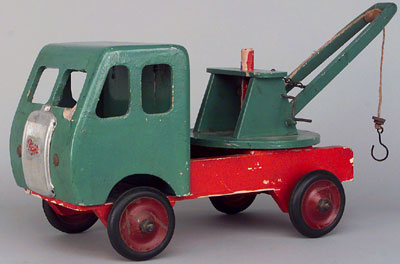 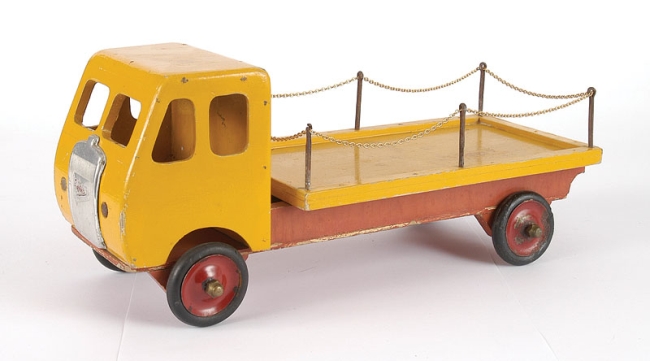
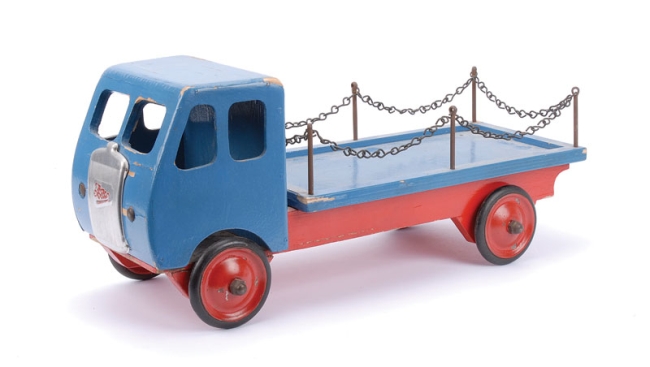 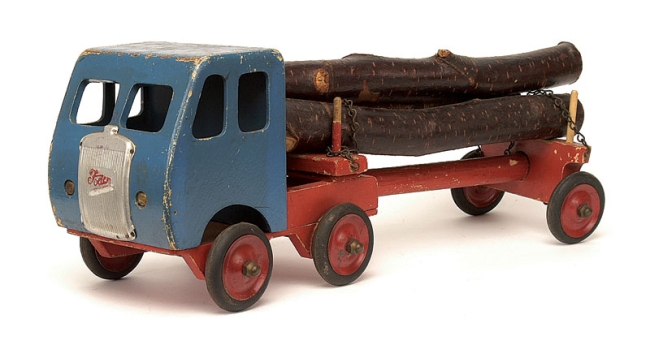
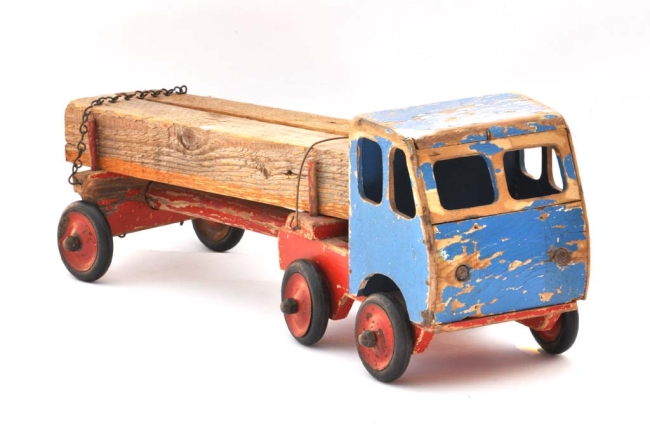 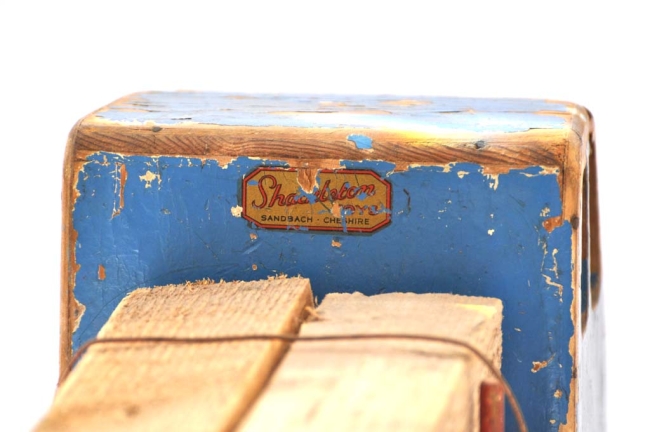
However Shackleton had an ambition to make constructional scale model lorries and the company purchased die-cast machine and other equipment so that every component could be produced ïn-house, including the clockwork motor, wheels, tyres, key and the tools that were sold with the model. The first diecast model, a Foden F.G6. was produced from about 1948.
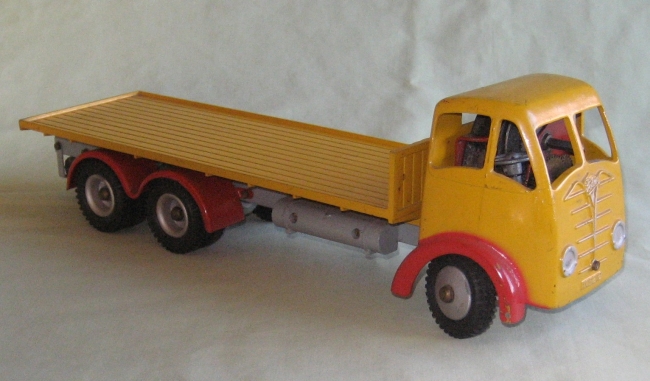 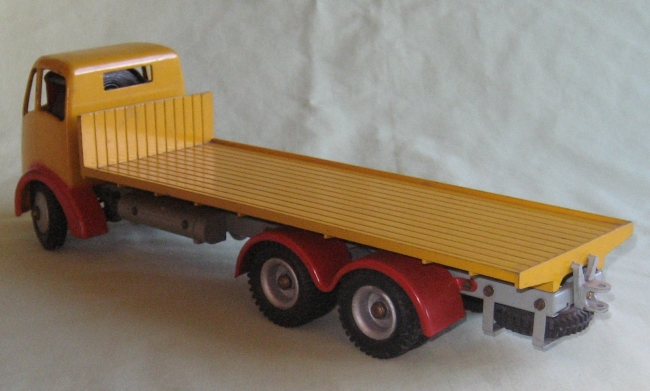
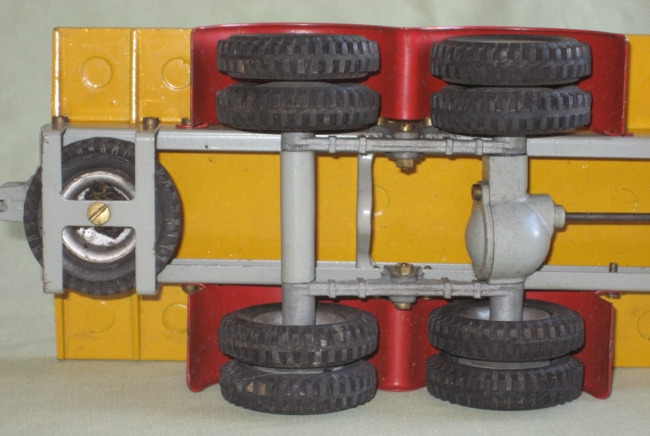 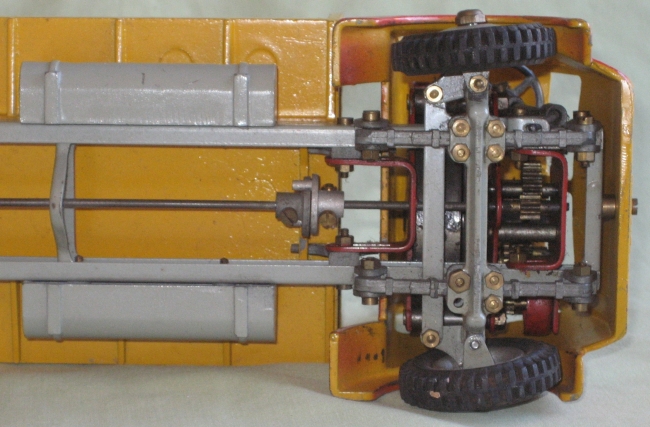
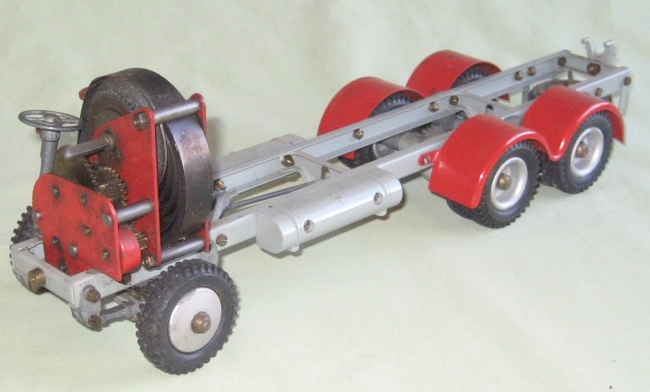 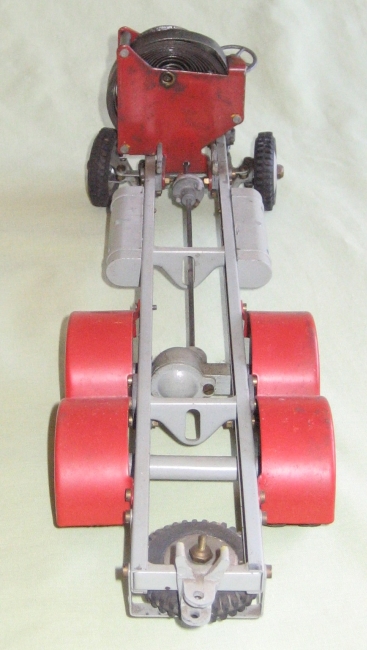
The Foden F.G.6.model is substantial, both in size and weight, dimensions being: length 13¾"/35cm, width-3½"/9cms, height-3¾"/9.5cms and weighing in at 3lbs/1.34k. - (the measurements in the original article are slightly at variance with the actual measurements of my own Foden so I have used my measurements).But the most impressive features are the engineering, attention to detail and the way it is constructed, the components being held together with small brass nuts and bolts. These were quite soft brass and could be broken if tightened too much. For those who wished to take the model apart a small brass-handled screw driver and a metal, double-ended spanner
were provided.
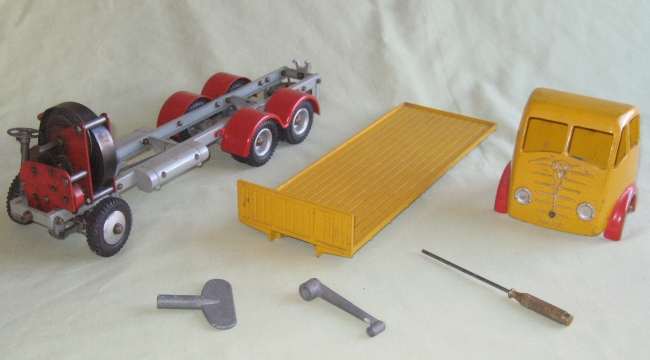 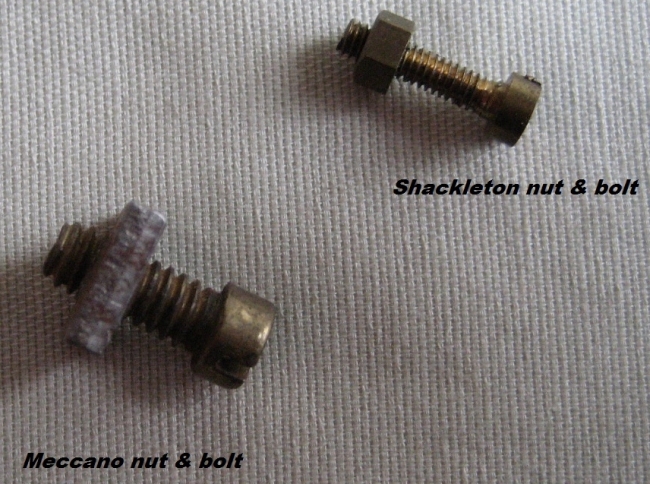
Inside the cab is a large clockwork motor, and a steering wheel which is connected to the front wheels. The motor provides power to the leading pair of wheels in the double-bogie arrangement under the flat tray, via a drive-shaft and differential.
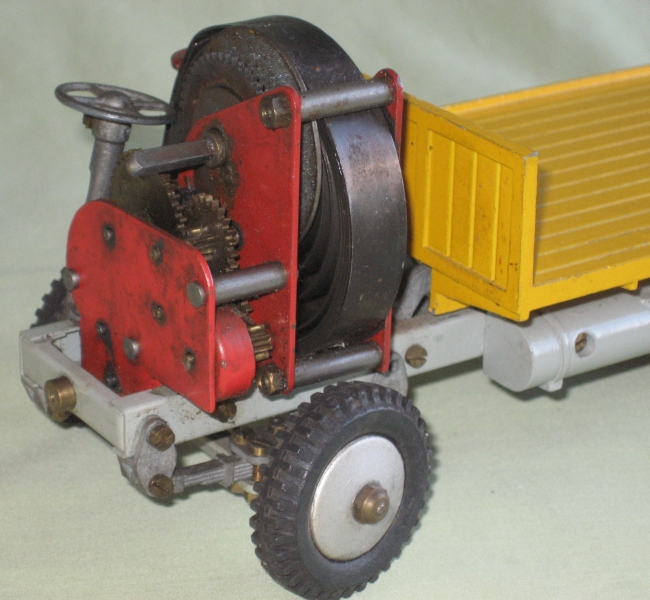 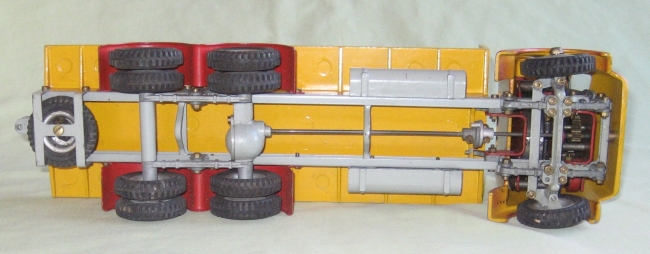
Each model came with a small maintenance instruction manual, giving advice on how to look after the model. Included in the manual is a list of replacement components which could be ordered from the company. The company even offered to replace a damaged motor with a reconditioned one for the cost of 3 shillings.
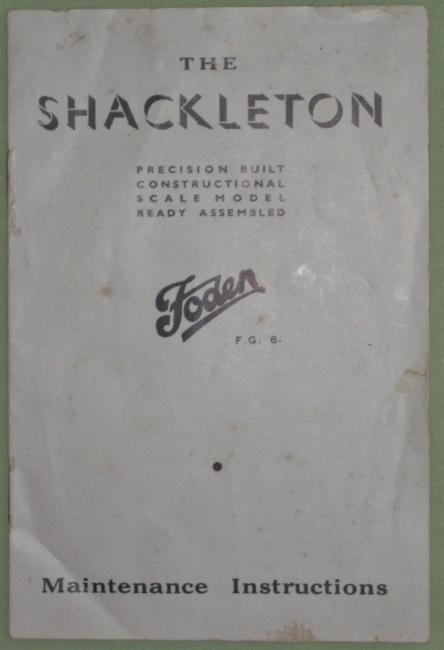
The Foden model was produced in various colours, usually with the cab and platform body in one colour, the front and rear mudguards a contrasting colour and the chassis a third but mostly grey colour. There are numerous variations with some colour combinations being more common than others.
Because of the complexity and size of the model it was expensive, 59/6 in 1949, but apparently it found a market and it was advertised in Meccano magazine in 1950 for 52/6.
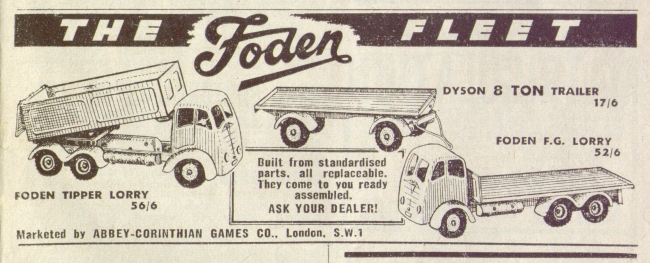
About 1950 a second model was added, this being a Dyson drawbar trailer. When coupled to the Foden F.G.6. it made an impressive model 20½" long.
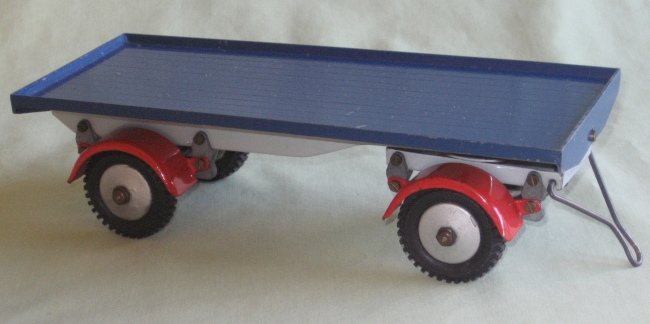 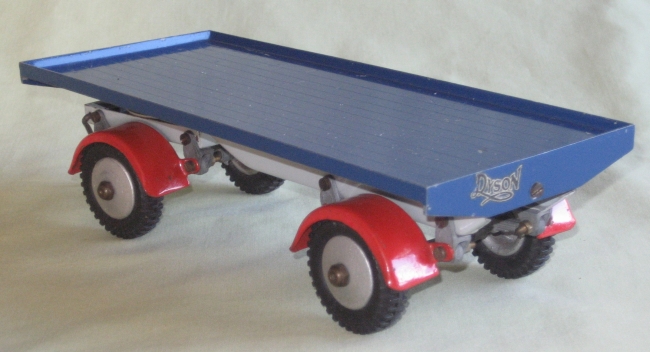
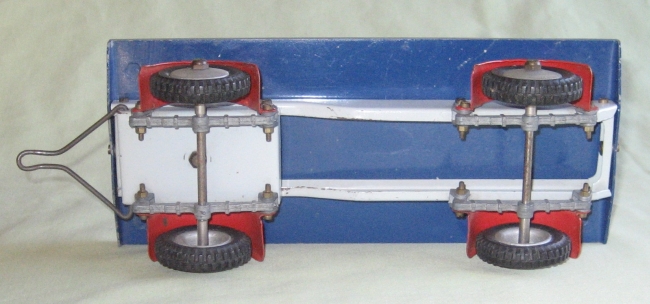 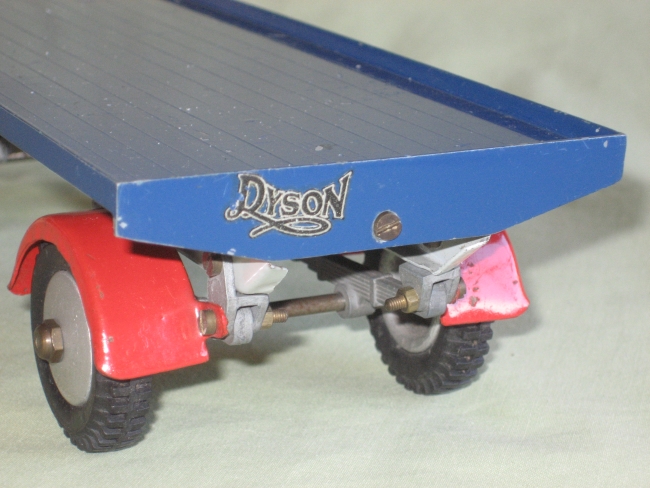

Soon after a shorter wheelbase bulk tipping version of the Foden was released. The colour variations are similar to those found with the flat tray model'.
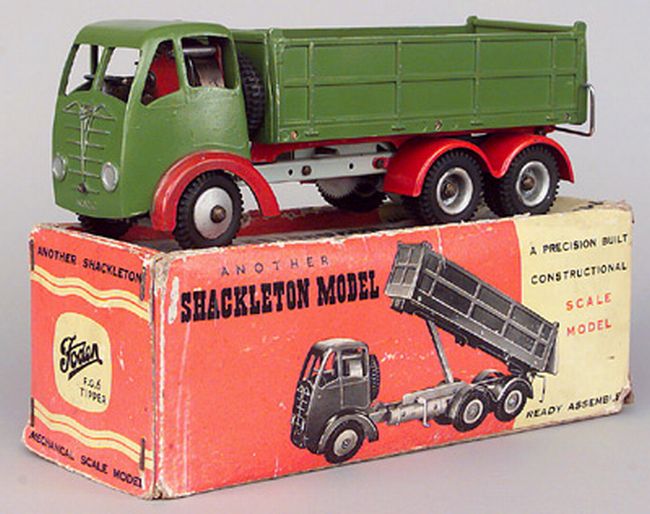 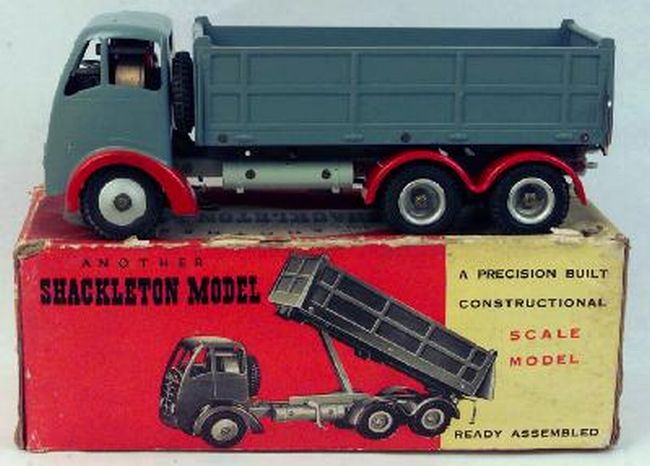
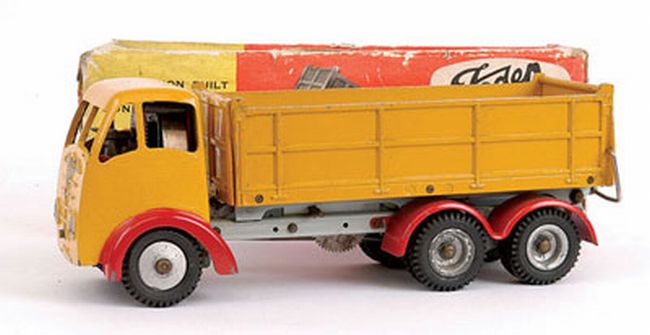 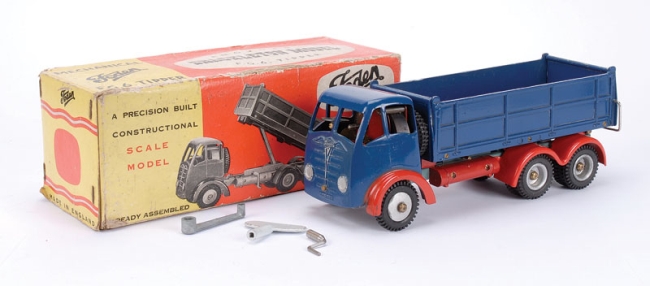
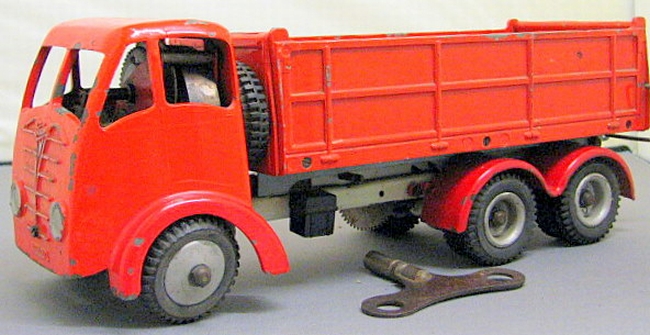
About this time Shackleton was approached by the David Brown Company and asked to design and manufacture a constructional model of their "Trackmaster 30" crawler tractor, primarily for promotional purpose. It was 10" long and painted red. 150 were produced, 100 for the David Brown Company and 50 for general distribution.
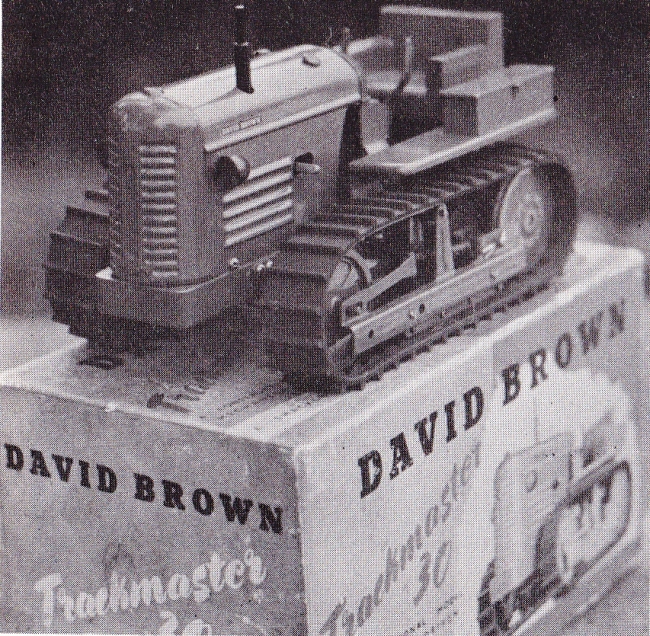 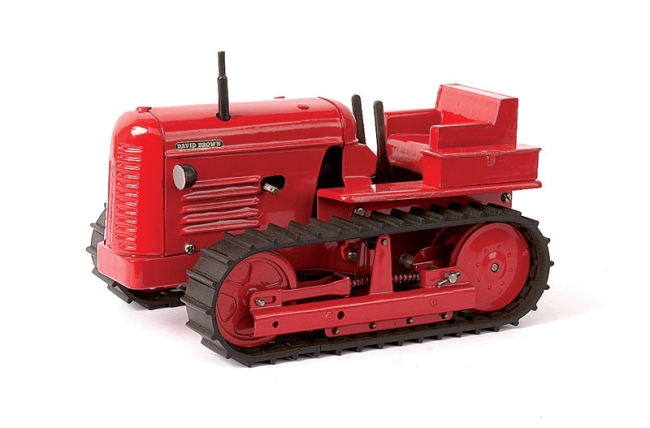
The red tractor above, in restored condition was sold for £1000 in a Vectis auction.
By 1951 supply of raw materials, especially zinc and other metals, came under Government restrictions (probably caused by the Korean War)
and the combined problems of insufficient raw materials and difficult trading conditions caused the company to collapse. Subsequently all the Shackleton dies and press tools were sold by the receiver to Chad Valley but nothing has been heard of these items since.
However the story does not end there, as in about 1958 Maurice Shackleton was asked by Foden to make some promotional models of their new S.21 model 8-wheeler truck. The resulting models are entirely the creation of one man, working in his spare time and in a workshop at the bottom of the garden! He made the moulds for the tyres and all the dies for the polystyrene axles, springs, steering column, shackles, hubs, prop-shaft etc. The cab was made from GPR (glass reinforced plastic) [fibreglass?] - apparently a new product at the time - and the chassis was made of pressed tinplate bolted together like the real thing. An electric motor provided power to the leading rear axle and, hidden under a cotton 'tarpaulin' on the wooden platform body was the battery.
The complete model is 18½" long and weighs 2½lbs, compared with the F.G.6 at 13¾" and 3lbs.

Some 230 of these models were produced by Maurice Shackleton between 1958 and 1960, each one hand-assembled and delivered, boxed, to Foden for the negotiated sum of £4 each, to be used for promotional purposes.
In about 2009 copies of this model were made by a friend of the Shackleton family from the original moulds and dies and one of these copies was sold by Vectis in 2009 for £180.
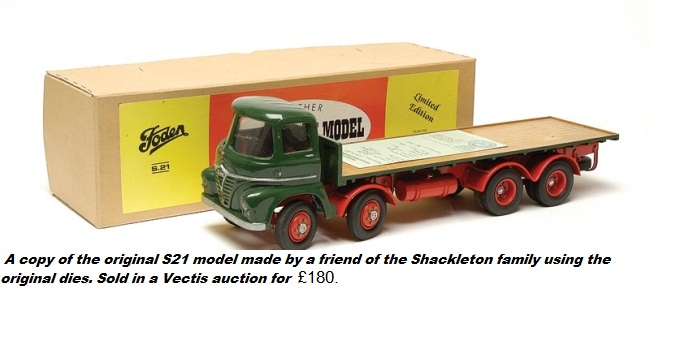
Finally a photo showing the difference in size between my Shackleton Foden and my well played-with Dinky model.
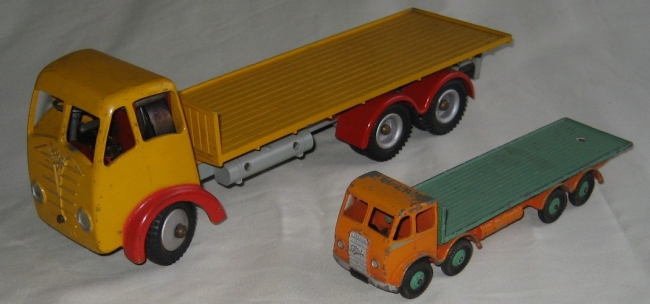 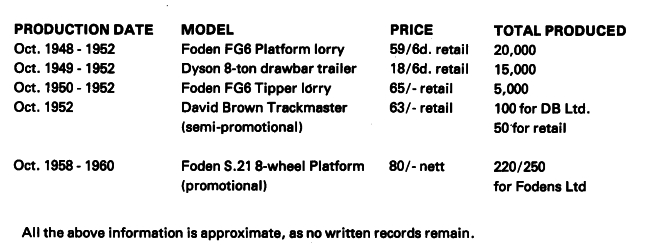 |